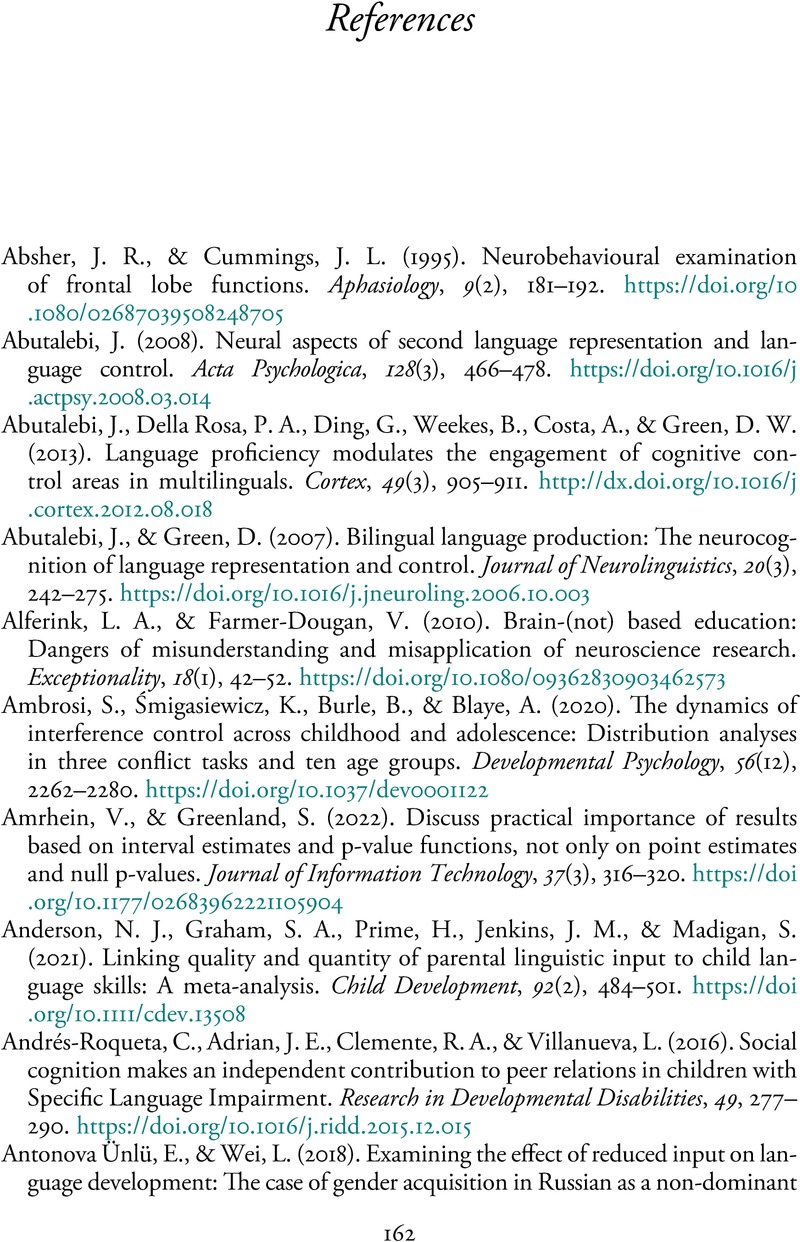Book contents
- Cognitive Control along the Language Continuum
- Cognitive Control along the Language Continuum
- Copyright page
- Contents
- Figures
- Acknowledgments
- Introduction
- Chapter 1 The Language Continuum
- Chapter 2 Cognitive Control
- Chapter 3 Methodological Issues
- Chapter 4 The Effect of Age on First Language Acquisition, Second Language Learning, and Cognitive Control Development
- Chapter 5 Associations between Language Ability, Language Proficiency, and Cognitive Control
- Chapter 6 The Impact of Language Input on Cognitive Control
- Chapter 7 Cognitive Control and Social Context of Language Use
- Chapter 8 Processing Speed and Cognitive Control
- Chapter 9 Cognitive Training and Language
- Chapter 10 Conclusions
- References
- Index
- References
References
Published online by Cambridge University Press: 09 July 2024
- Cognitive Control along the Language Continuum
- Cognitive Control along the Language Continuum
- Copyright page
- Contents
- Figures
- Acknowledgments
- Introduction
- Chapter 1 The Language Continuum
- Chapter 2 Cognitive Control
- Chapter 3 Methodological Issues
- Chapter 4 The Effect of Age on First Language Acquisition, Second Language Learning, and Cognitive Control Development
- Chapter 5 Associations between Language Ability, Language Proficiency, and Cognitive Control
- Chapter 6 The Impact of Language Input on Cognitive Control
- Chapter 7 Cognitive Control and Social Context of Language Use
- Chapter 8 Processing Speed and Cognitive Control
- Chapter 9 Cognitive Training and Language
- Chapter 10 Conclusions
- References
- Index
- References
Summary

- Type
- Chapter
- Information
- Cognitive Control along the Language Continuum , pp. 162 - 213Publisher: Cambridge University PressPrint publication year: 2024

